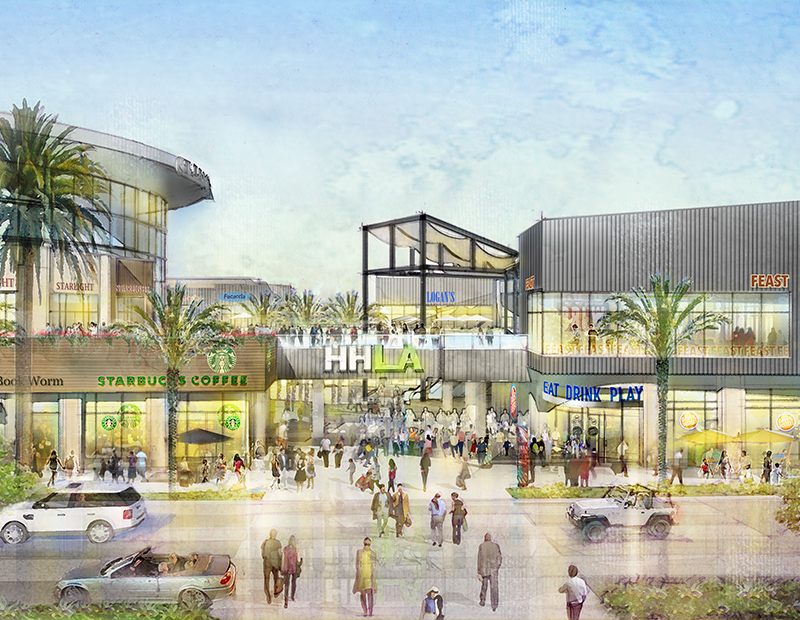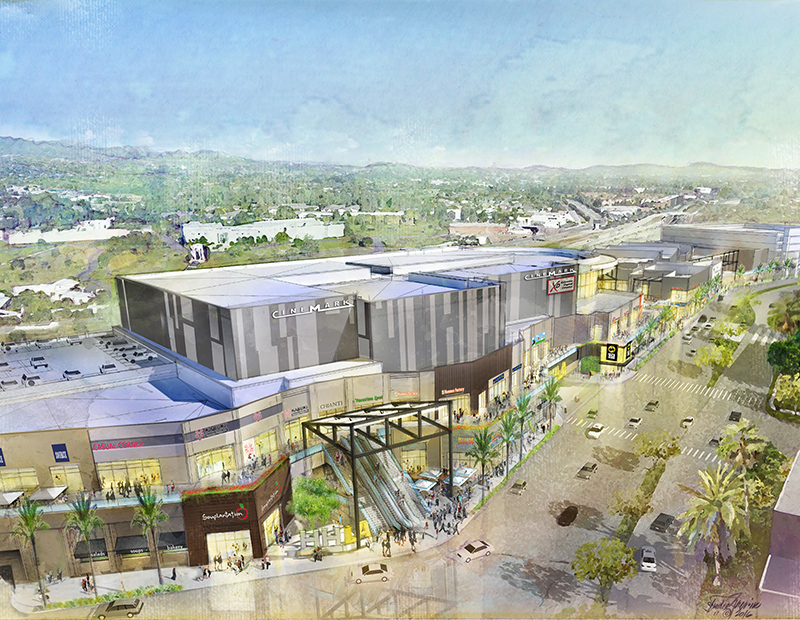From Classic Retail Center to Experiential Shopping Destination
Improvements brought to HHLA, a shopping mall in Westchester, Calif., is illustrative of how retail centers across the nation are turning into live-work-play destinations fostering a sense of community.
By Roxana Baiceanu
The repositioning of the former Promenade at Howard Hughes Center in West Los Angeles, announced earlier this year, is halfway through. Laurus Corp., the company that acquired the retail center in mid-2015, invested $30 million in transforming the classic “brick-and-mortar” retail center into an entertainment destination for the entire community. Project completion is scheduled for the beginning of 2018.
This is the first time the property, now rebranded as HHLA, undergoes upgrades since it was completed in 2001. As revealed by Austin Khan, the company’s CIO, “Laurus’ comprehensive renovation is designed to overhaul the tenant mix to a selection of premium national and regional tenants providing food and beverage, entertainment and health and beauty services.”
The approach Laurus is undertaking—that of “placemaking”—is one which shopping mall developers and architects across the nation have been recently starting to put into practice. The concept was coined in the 1970s in urban studies and designates the process of improving a place so that people can live, work, play and learn there. Retail developers implementing the method noticed it was particularly efficient in highly dense urban areas but also suburbs with a great influx of tech companies. Playa Vista, a district neighboring Westchester, is the example that inspired Laurus.
Some of the key aspects Khan discussed with Multi-Housing News include Laurus’ plans to transform the new HHLA into a destination and how this new type of retail centers addresses the needs of the new generation of consumers.
How was HHLA at the time Laurus Corp. bought it? How about the surrounding area?
Khan: The retail center at the time of acquisition was going through a transition, with one of its anchors, Nordstrom Rack, vacating. Nordstrom’s departure is what created the opportunity to reposition HHLA to a more dining, entertainment and lifestyle-focused center. With outstanding annual income demographics ($123,000 within a one-mile radius), prominent freeway frontage and proximity to an increasing concentration of office buildings, the center was well-positioned to take advantage of the growth in the area. What the center had been missing is an identity to help drive the leasing strategy in a way that appealed to the increasingly young professional tech demographic in the area.
Since that time, there have been significant changes, not only to the center, but also the immediate area. The Westchester community has continued to grow, with nearly 3,000 units delivered in the last few years and more than 7,000 units under construction. Last year, Equity Residential delivered The Altitude Apartments, a project offering 545 Class A units, while Blackstone and CBRE acquired the bulk of the office inventory in the area, with plans to invest millions in additional capital to renovate and reposition their buildings.
What are the changes that Laurus plans to bring to HHLA?
Khan: The center’s $30 million redevelopment plan includes creating connections with immediately adjacent office buildings, enhancing public spaces and improving circulation in the area. The enhanced public spaces will include fire pits, outdoor movie screening areas and new pedestrian walkways connecting the Howard Hughes Center office buildings to HHLA.
Thus, at HHLA, over the course of a day, a potential consumer will be able to find a great meal from a broad variety of restaurants as well as unique offerings at a boutique grocer to take home, watch a movie and then have a late night cocktail at a high-energy lounge to finish off the evening.
How have the needs of an increasing pool of young professionals employed in the tech sector transformed the retail experience? Can we talk about a pattern or trend?
Khan: The tech sector has transformed the retail experience much in the same way it has on a broader basis. Retail that is more unique and less replicable through e-commerce channels, experiential retailing is flourishing. Great examples include Apple stores, SoulCycle studios and Eataly.
In addition, tech employees, but also consumers in general, are increasingly expecting retail centers to provide an overall entertainment experience as opposed to being a place for engaging only in specific transactions. Today, the retail environment is seen as a location to enjoy, relax, browse and engage in commerce that can’t be as easily and conveniently replicated through a delivery that arrives at their doorstep.
Renderings courtesy of Laurus Corp.










You must be logged in to post a comment.